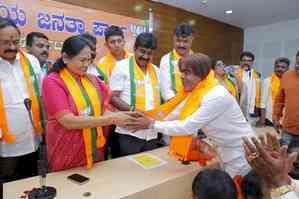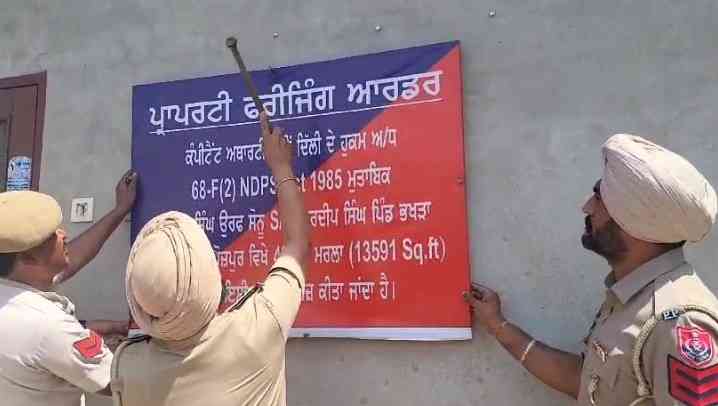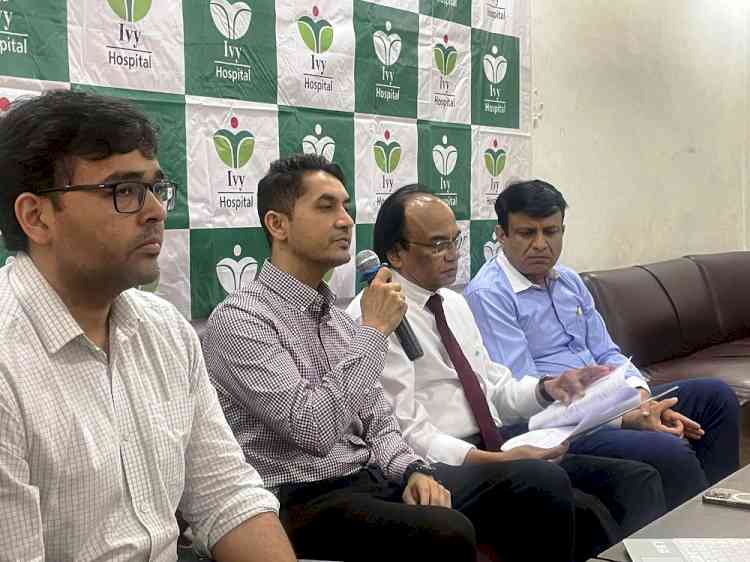KVK Holds Kisan Gosthi On Crop Residue Management
Author(s): City Air NewsDr. Rajveer Singh (Zonal Project Director, Zone 1) addressing the farmers. Ludhiana, April 23, 2015: To prevent wheat residue burning, the Krishi Vigyan Kendra (Ropar) of Punjab Agricultural University (PAU) has...


Dr. Rajveer Singh (Zonal Project Director, Zone 1) addressing the farmers.
Ludhiana, April 23, 2015: To prevent wheat residue burning, the Krishi Vigyan Kendra (Ropar) of Punjab Agricultural University (PAU) has organized a Kisan Gosthi on “Crop Residue Management” at village Fatehgarh Viran under the Panderwara (fortnight) celebrations. More than 150 farmers are participating in this gosthi, which will conclude on April 30.
Dr Rajveer Singh, Zonal Project Director, Zone-1 and Dr R.S. Sidhu, Director of Extension education, PAU graced the occasion.
Dr Rajveer Singh said, “In the last 100 years, the recent decade was the hottest one.” Rainfall in the month of March has broken all the records of past 100 years, he added. Dr Singh advised the farmers to adopt resource conservation technologies in order to deal with the changing climate scenario. Cautioning the farmers against the burning of crop residues, he said it leads to smoke, release of green house gases viz. carbon dioxide, methane and nitrous oxide in addition to the loss of plant nutrients. Dr Singh suggested the use of crop residue for improving soil health, reducing pollution, increasing productivity and sustainability, and resilience of agriculture.
Dr Sidhu emphasized on the adoption PAU developed resource conservation technologies such as happy seeder and zero till drill without burning crop residue. He also informed the farmers about the recently developed web based disease forecasting system. He stressed on the use of recommended varieties of rice and adoption of water saving techniques such as tensiometer in rice.
Dr Harinder Singh, Deputy Director (Training) KVK, Ropar acquainted the farmers with the ill effects of crop residue burning. He said about 80% of the wheat stubble is converted into wheat bhusa and used in animal feed. After making wheat bhusa, still some farmers burn remaining residue, he pointed out. Further, Dr Singh advised the farmers to sow summer moong with zero seed drill and happy seeder method. By this way farmers can save 1/3 Nitrogen in the coming rice crop besides harvesting the moong, he highlighted. He guided the farmers regarding the use of leaf colour chart for application of urea to rice.
Dr Sanjeev Ahuja asked the farmers to use paddy straw for mulching the vegetable crops such as chilli and turmeric. Besides, it can also be efficiently used in paddy straw mushroom cultivation, he said.
Dr Ashok Kumar advised the farmers to adopt integrated disease and pest management techniques such as use of trichogramma cards and trichoderma harzianum to conserve natural resources and reduce cost of cultivation.
Dr Raminder Ghuman suggested the farmers using recommended varieties and technologies.
A quiz pertaining to stopping the burning of crop residue was also organised wherein prizes were distributed to the winning farmers. A farmer namely Krishan Kumar made a slogan on crop residue burning, “Saado na parali pardushan vadhon nu, manno kahna vigyania da jindagi bachan noo” under the quiz competition.
Progressive farmers namely Hakam Singh, Amrik Singh, Gurdit Singh and Ravinder Singh conducted demonstrations on sowing of wheat with happy seeder and shared their experiences with the scientists and fellow farmers.
The team of scientists also visited the fields of Hakam Singh, Jaspal Singh, and Pal Singh to observe the performance of happy seeder demonstration of wheat and interacted with them.
Jangir Singh, Parbandak, Gurduwara committee proposed vote of thanks.
Date:
Thursday, April 23, 2015

 cityairnews
cityairnews 















